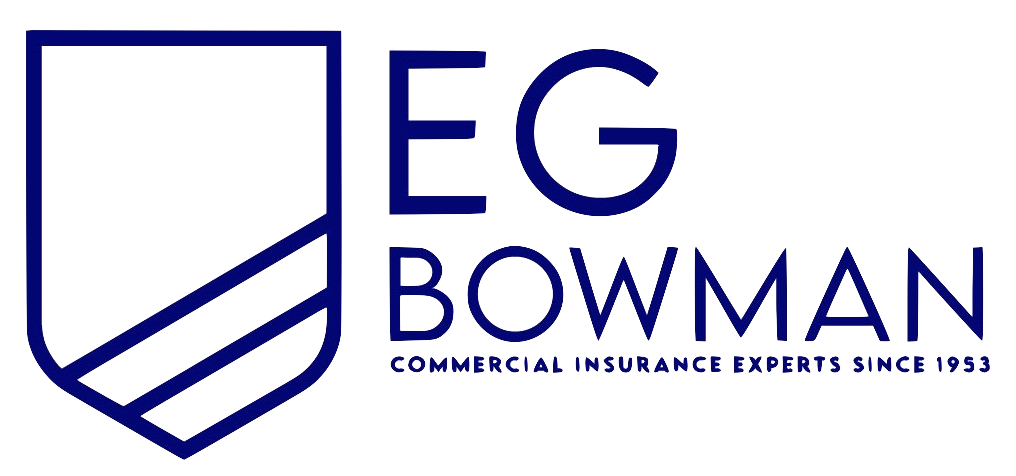New York Office Building Insurance
See How We're Different:
or Call Us: 212-425-8150

Most Common Business Policies
Index
Contact Us
When it comes to protecting your commercial assets, understanding office building insurance is crucial. In New York, where the property market is highly competitive and dynamic, knowing the intricacies of office building insurance can save business owners from potential financial pitfalls. This article provides an in-depth look at the various aspects of office building insurance, including coverage types, influencing factors, and tips for choosing the right provider.
Understanding Office Building Insurance
Office building insurance is a specialized policy designed to protect commercial properties against various risks. Unlike homeowners' insurance, which covers residential properties, office building insurance is tailored for businesses operating out of commercial spaces. This section delves into the basics of this insurance type and its significance in your business operations.
The Basics of Office Building Insurance
Office building insurance typically encompasses property insurance, liability insurance, and additional coverage options tailored for commercial buildings. Property insurance protects the physical structure and any contents within it, while liability insurance safeguards against claims made by third parties for bodily injury or property damage occurring on the premises.
This insurance usually operates on an "all-risk" basis, meaning it covers a wide range of possible events unless specifically excluded. Common exclusions might include natural disasters, certain types of vandalism, or neglect. Therefore, it's crucial to understand the specific terms of your policy to avoid gaps in coverage.
In addition to the standard coverage options, many policies also offer endorsements or riders that can be added to customize your protection. For example, business interruption insurance can be included to cover lost income during periods when your office is unusable due to a covered event. This feature is particularly beneficial for businesses that rely heavily on consistent cash flow, as it can help mitigate the financial impact of unexpected disruptions.
Why Office Building Insurance is Essential
The importance of office building insurance cannot be overstated. For one, it serves as a safety net against unforeseen financial losses due to property damage or lawsuits. Without proper insurance, a single incident could lead to devastating financial consequences for your business.
Moreover, many landlords and lenders require office building insurance before signing a lease or securing a loan. This requirement ensures that the property is protected, safeguarding the investment for all parties involved. Therefore, having this insurance in place also enhances your credibility as a business owner.
Furthermore, office building insurance can also play a pivotal role in employee safety and retention. By demonstrating a commitment to safeguarding the workplace, you foster an environment of security and trust among your employees. This can lead to higher morale and productivity, as employees feel secure knowing that their workplace is protected against potential hazards. Additionally, in the event of an incident, having comprehensive insurance can expedite recovery and minimize disruptions, allowing your business to resume operations swiftly and efficiently.

Types of Coverage for Office Buildings
Understanding the various types of coverage available to office buildings is crucial for ensuring adequate protection. Each type of coverage addresses different risks, and combining them can create a comprehensive insurance plan tailored for your business needs.
Property Insurance for Office Buildings
Property insurance is the backbone of office building insurance. It provides coverage for the physical structure of the building as well as the equipment, furniture, and inventory contained within it. This insurance generally covers various risks, including fire, theft, vandalism, and certain types of water damage.
Office owners may also opt for additional endorsements to extend coverage. For instance, you may add coverage for natural disasters if you are in a flood-prone area or require coverage for specialized equipment unique to your business. Furthermore, it is wise to conduct regular assessments of your property to ensure that your coverage limits reflect the current value of your assets. This proactive approach can prevent underinsurance, which can lead to significant financial losses in the event of a claim.
Liability Insurance for Office Buildings
Liability insurance is another essential component of office building insurance. It protects you against legal claims resulting from accidents or injuries that occur on your property. For example, if a visitor slips and falls in your office, liability insurance can cover medical expenses and legal fees associated with lawsuits.
This type of insurance is vital for any business, as it helps protect against costly legal actions that could threaten your business's financial health. Additionally, having liability coverage can enhance your reputation and provide peace of mind to employees and clients alike. It is also advisable to consider umbrella liability insurance, which provides an extra layer of protection beyond standard liability limits, ensuring that you are safeguarded against larger claims that could arise from unforeseen incidents.
Business Interruption Insurance
Business interruption insurance is a lesser-known but equally important coverage type. It compensates for lost income and ongoing expenses if your office building becomes unusable due to a covered event, such as a fire or natural disaster. This can be critical for maintaining cash flow during challenging times.
For office owners, this insurance helps ensure that your business can continue functioning or recover quickly after a disruptive event. It covers expenses such as rent, salaries, and other operational costs, allowing you to focus on rebuilding rather than financial concerns. Additionally, some policies may offer coverage for extra expenses incurred while you relocate temporarily, such as increased rent or utility costs, which can provide further financial relief during the recovery process. Understanding the specific terms and conditions of your business interruption policy is essential to ensure that you are adequately protected against potential income loss during unforeseen circumstances.
Factors Influencing Office Building Insurance Costs
The cost of office building insurance varies widely due to several key factors. Understanding these factors can help you anticipate expenses and plan accordingly for your insurance needs.
Location and Size of the Building
The geographical location of your office building plays a significant role in determining insurance costs. Areas prone to natural disasters, such as hurricanes or flooding, may have higher premiums due to increased risk. Similarly, urban properties in densely populated areas often carry higher liability risks, impacting the overall cost of coverage.
The size and square footage of the building also influence insurance rates. Larger buildings typically require more coverage, leading to higher premiums. It’s important to assess your property's unique location and dimensions to get accurate estimates for your insurance costs. Additionally, the local real estate market can affect insurance rates; for instance, properties in high-demand areas may see increased premiums as competition for space drives up values.
Building's Age and Construction Type
The age and construction materials of the office building can significantly affect insurance costs. Older buildings may require more frequent repairs or updates, leading to higher premiums due to perceived risks. Conversely, newer buildings that meet modern safety codes may qualify for lower rates.
Moreover, buildings constructed with fire-resistant materials or equipped with advanced security systems may also enjoy lower premiums due to their reduced risk profile. Insurers often consider these factors when determining the final coverage cost. It’s also worth noting that renovations or upgrades to older buildings can positively influence insurance rates, as they may enhance safety features and reduce the likelihood of claims.
Occupancy and Use of the Building
The type of tenants or businesses operating within the office building can also impact insurance costs. For example, buildings housing high-risk businesses, such as those involving hazardous materials or extensive customer interaction, may face higher liability insurance rates.
Having a mix of various business types can mitigate risks and lead to more stable insurance costs. It's essential to evaluate the nature of occupancy and the activities conducted within the building to accurately assess insurance needs and potential expenses. Additionally, the presence of amenities, such as gyms or cafeterias, can also influence insurance costs, as these features may increase the likelihood of accidents or injuries on the premises. Insurers may require a thorough assessment of the building's usage to tailor a policy that best fits the specific risks associated with its operations.
How to Choose the Right Insurance Provider
Choosing the right insurance provider can be daunting, especially with numerous options available. However, a strategic approach can simplify the process.
Evaluating Insurance Providers
Begin by researching various insurance providers and their reputations in the market. Look for companies that specialize in commercial property insurance and have experience dealing with office buildings specifically. Check customer reviews and testimonials to assess their reliability and claims handling.
Additionally, consider reaching out to industry peers for recommendations. A direct referral from a trusted colleague can often point you toward reputable providers who offer excellent service and coverage options tailored to your needs. Networking at industry events or joining professional associations can also provide valuable insights into which providers are favored by your peers.
Another effective strategy is to compare the financial stability of potential insurance companies. Resources like A.M. Best or Standard & Poor's can provide ratings that reflect the financial health of an insurer. A company with strong financial ratings is more likely to be able to pay claims promptly and efficiently, giving you peace of mind that your investments are well protected.
Understanding Policy Terms and Conditions
Before committing to an insurance policy, take the time to thoroughly understand the terms and conditions. Pay close attention to coverage limits, exclusions, and deductibles associated with each policy. A seemingly inexpensive policy may come with significant gaps in coverage, leading to higher costs in the long run.
Seek clarification on any terminology or conditions you find confusing. Engaging in an open dialogue with your prospective provider can ensure that you fully grasp the policy, allowing you to make an informed decision that protects your investments effectively. It may also be beneficial to request sample policies from different providers to compare how they address similar risks and what additional coverage options they might offer.
Furthermore, consider the flexibility of the policy. As your business grows or changes, your insurance needs may evolve. A provider that offers customizable policies or the ability to adjust coverage as needed can be invaluable. This adaptability can help you avoid gaps in coverage during transitional periods, ensuring that your business remains safeguarded against unforeseen circumstances.

Frequently Asked Questions about Office Building Insurance
Understanding office building insurance can raise many questions. Here are some frequently asked questions to help clarify important concerns.
What Does Office Building Insurance Typically Cover?
Office building insurance generally covers property damage, liability claims, and, in some cases, business interruption losses. Specific coverage can include fire damage, theft, slipping and falling incidents, and other risks associated with commercial properties.
However, each policy is unique, and coverage may vary significantly between providers. Always review the details of your policy carefully to understand exactly what is covered and what is not. Additionally, many policies offer optional coverage for specific risks, such as natural disasters like floods or earthquakes, which may be particularly relevant depending on your building's location. Understanding these nuances can help you tailor your insurance to meet the specific needs of your business.
How Much Does Office Building Insurance Cost in New York?
The cost of office building insurance in New York can vary dramatically based on several factors, including the size, location, and condition of the building. On average, business owners can expect to pay anywhere from a few thousand to tens of thousands of dollars annually for coverage.
To obtain a more accurate estimate, consider getting quotes from multiple insurers to compare coverage options and prices. This approach allows you to make an informed decision based on your specific needs and budget. Furthermore, it’s beneficial to consider the long-term implications of your insurance choices; while a lower premium might seem appealing, it’s crucial to ensure that the coverage adequately protects your assets against potential risks.
How Can I Reduce My Office Building Insurance Costs?
Reducing office building insurance costs can be achieved through various strategies. One common approach is to increase your deductible, which can lower your premium. However, be sure that the increased risk you are taking is manageable in case of a claim.
Another strategy involves improving the safety and security features of your building. Installing security systems, smoke detectors, and fire alarms can reduce risks, leading to lower insurance premiums. Additionally, bundling multiple policies with the same provider can often result in discounts. Engaging in regular maintenance and keeping thorough records of improvements made to the property can also demonstrate to insurers that you are a responsible owner, potentially resulting in further reductions in your premiums.
Moreover, participating in risk management programs offered by insurance companies can provide additional savings. These programs often include training for employees on safety protocols and emergency procedures, which not only helps in reducing insurance costs but also fosters a safer working environment. By being proactive in managing risks, you can ensure that your office building remains a secure and well-protected asset.
